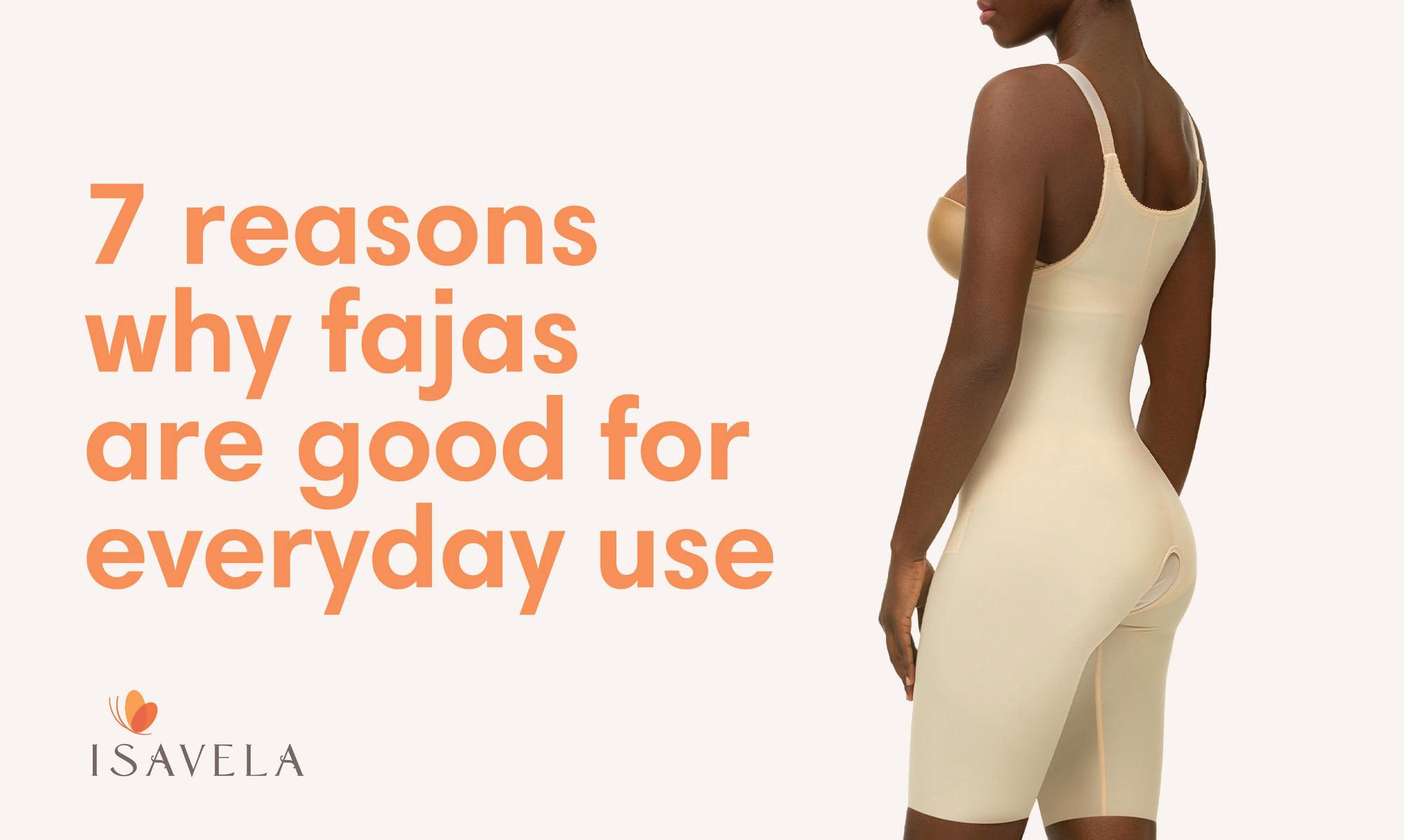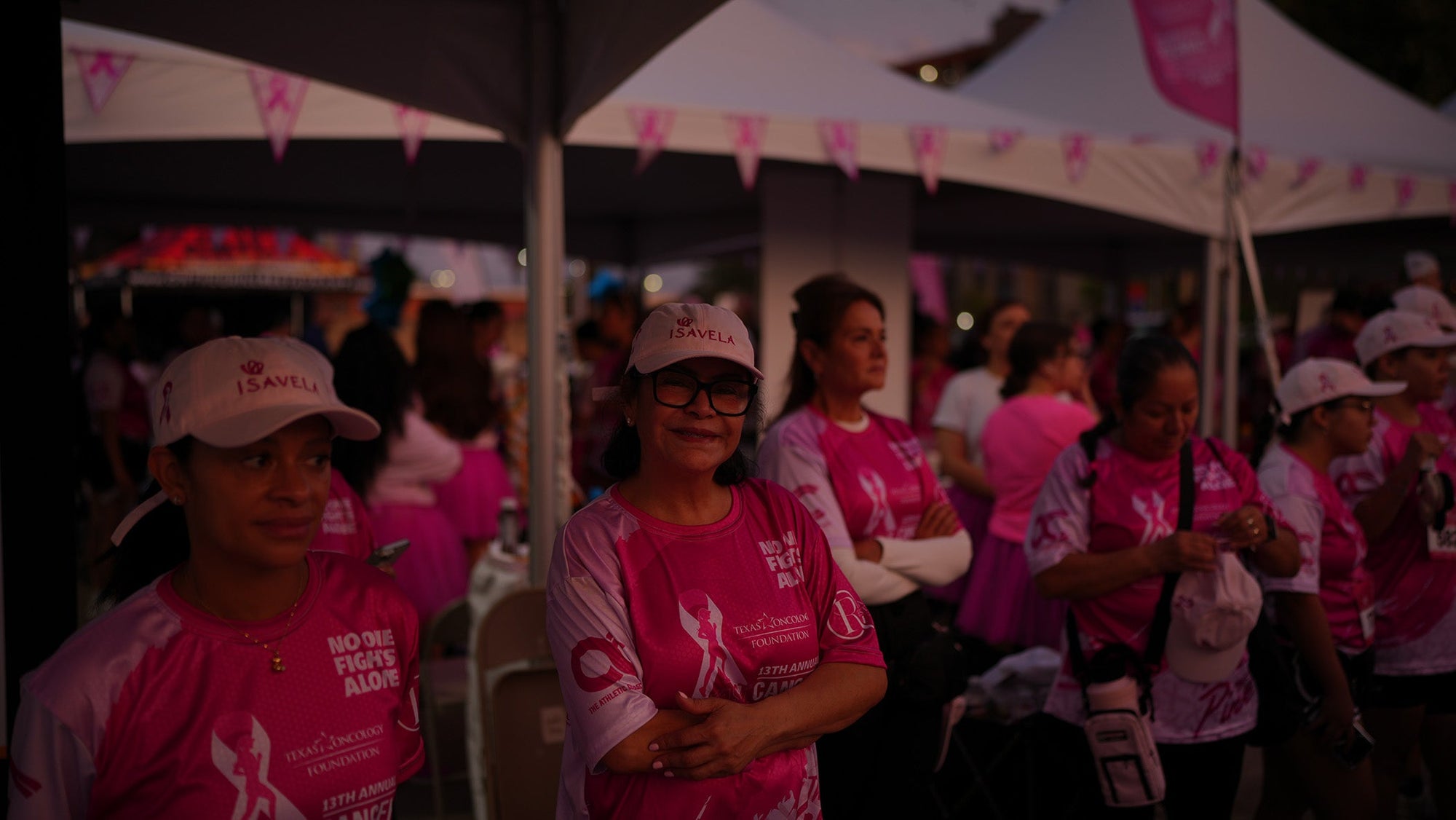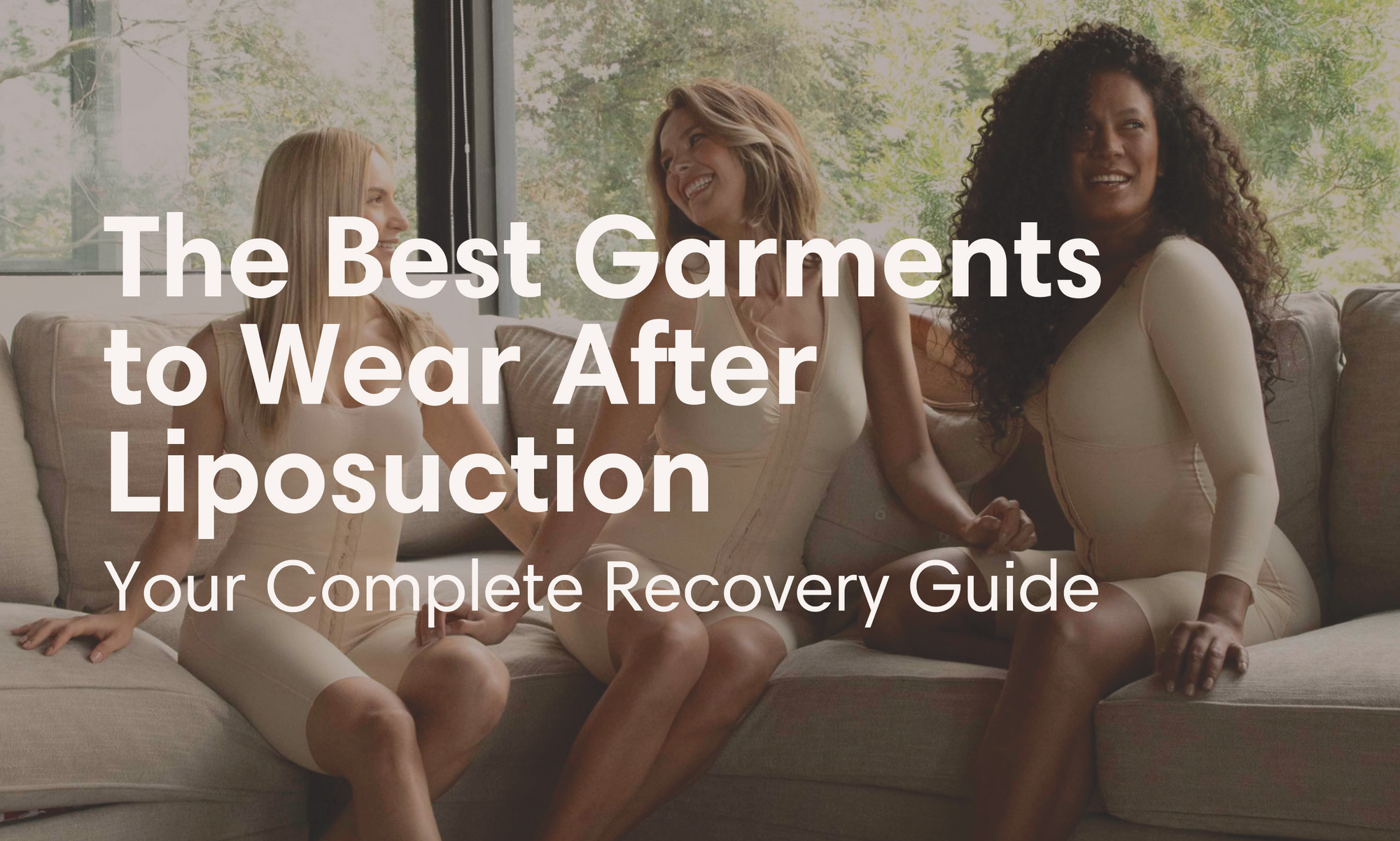Whether you’ve just come out of surgery or are simply looking to feel more supported during your daily routine, fajas aren’t just for recovery. These compression garments have become everyday essentials for thousands of people — helping improve posture, boost confidence, and create a smoother silhouette under clothes.
Here are 7 reasons why fajas are great for everyday wear — and what to consider before making them part of your daily routine.
What Are Fajas?
Fajas are high-quality compression garments that originated in Colombia. First, women mainly used them after body-shaping surgeries for enhanced recovery and better results. But now, they’ve gained a new role for their body-shaping features, which is giving women a curvier shape.
Fajas come in many styles and shapes, and they’re available for both women and men. For instance, you’ll find belly bands, full-body suits, and girdles. They also have many manufacturing materials that dictate how tight they are, like cotton, latex, nylon, and lycra.
Generally, the less stretchy the material is, the more it defines the body. However, people’s needs are different, and some outfits call for tighter effects than others. So before you purchase a faja, you should know when you’ll use it and under which clothes.
Why Fajas Are Good for Everyday Use
After giving you a broad idea about fajas and their uses, it’s time to get into more details regarding why they’re suitable for everyday use. Here are seven reasons why.
1. Smoother Silhouette Under Clothes
Fajas are designed to gently shape the body, creating a smoother, more streamlined look under clothing. Whether you're wearing jeans, a dress, or workwear, a faja can help your outfit fall better and boost your confidence.
Explore our Body Shapers Collection to find your perfect everyday layer.
2. Posture Support Throughout the Day
Wearing a compression garment can encourage better posture by providing structure around the midsection and back. This added support is especially helpful if you sit for long periods or experience lower back discomfort.
Better Blood Flow
You might think it’s far-fetched, but many people wear fajas daily to improve their blood flow. Doctors already prescribe compression garments in some medical cases, like varicose veins and lymphoedema, but why?
Compression garments, like fajas, apply pressure on many body areas, preventing veins from stretching. When veins stretch, blood pools in the legs, making it more challenging to pump sufficient blood to the heart.
Compression garments also reduce swelling, especially after surgeries like Brazilian butt lifting (BBL) and breast augmentation.
It’s worth mentioning that even if you don’t suffer from any medical condition, improving your blood flow is essential for your overall health.
4. Light Compression Can Improve Circulation
Mild compression garments may promote healthy blood flow, especially when worn during long periods of sitting or standing. While medical-grade compression should always be guided by a professional, gentle everyday fajas can still offer circulatory support.
5. Supports Core Engagement
Wearing a faja can give you a tactile reminder to engage your core muscles throughout the day. While it’s not a substitute for exercise, it can complement your posture and fitness goals by encouraging better form.
6. Postpartum Comfort and Support
After giving birth, most women take time to get accustomed to their old, pre-baby bodies. More so, childbirth is exhausting and puts a lot of pressure on bodies. That’s why compression garments gained new fame among mothers. Doctors often recommend them for both cases of birth, natural and C-section.
An everyday faja can help support abdominal muscles and offer more comfort as the body gradually returns to its pre-pregnancy state.
Check out our Postpartum Compression Garments designed with comfort in mind.
7. Easy to Incorporate Into Your Routine
One of the best things about fajas? They're easy to wear. Modern fajas come in breathable, seamless designs that move with you — making them practical for everyday use, whether you're at work, running errands, or relaxing at home.
Types of Fajas
There are many types of fajas on the market to satisfy every taste. Here’s a brief roundup of the most common types.
Full-Body Suit
A full body suit will cover your body from top to bottom, including your legs. Some full-body suits also come with long sleeves. It’s worth mentioning that they’re not as comfortable as other types, but they’re better for improving your blood circulation because they cover the legs, where veins often stretch.
Mid-Thigh Girdle
Mid-thigh girdles are ideal for people who want to improve their posture and postpartum mothers. They cover your body, starting from your breasts to your mid-thighs, and they shape your curves excellently.
These girdles are ideal for people planning to wear fajas for a long time because they’re more comfortable than full-body girdles and will give you satisfying results.
Panty-Style Girdle
Panty-style girdles don’t reach the thighs; they stop at your butts and are more comfortable than other types. They’re ideal for women who want to shape their butts and accentuate their waists.
Belly Bands
The last type we’ll talk about is belly bands. Belly bands only cover your waist. And although they’re less effective than other types, they’re ideal for women who only want to shape their waist and have no problem with the rest of their bodies. However, belly bands don’t do much to improve your posture or your blood circulation.
For a Complete List of BBL Fat Transfer Garments Click Here!
Myths Related to Wearing Fajas
Fajas are highly beneficial and widely available on the market; however, some people spread myths about them to either glamourize or cast them down. Lucky for you, we’ve decided to debunk the myths with the truth, so bear with us!
Fajas Can Help You Lose Weight
Contrary to popular belief, fajas have no relation whatsoever to losing weight. They might give you a slimmer look and motivate you to go on a diet and exercise, but not more than that. Some compression garments also help tighten the skin, preventing the undesirable flappy skin look. And while many people consider this a weight loss, it definitely isn’t.
Many people believe that compression garments can help you burn calories and lose a few pounds. But believe us, you can only achieve this through a healthy lifestyle and exercise.
Fajas Are Most Effective When They Have a Smaller Size Than Your Body
For some reason, many people think that smaller fajas will breed better results. But let us tell you, buying a garment that’s not your size will only succeed in making you feel uncomfortable. It might also give you a skin rash or leave you with blood circulation issues.
Ideally, your faja should be tight enough to give you a curvier body shape but loose enough to let you breathe and move properly. If you wear a faja or any compression garment and feel that your breaths are constricted, you must discard it and buy a new one.
Fajas Are Only Made for Women
Compression garments are often associated with women because of their beauty standards. However, it isn’t a rule. Men can wear fajas and other compression garments normally.
But the purpose of wearing them differs from man to woman. Most women wear fajas for a better body shape or during postpartum recovery, while men wear them for exercising and medical conditions. Some men also wear fajas for better body posture.
Fajas Are Only Made for Plus-Sized People
Many people associate fajas with plus-sized people and think it’s odd when normal-sized people wear them. However, fajas aren’t limited to plus-sized people. Anyone can wear a faja to accentuate their body and gain better-looking curves, even if they have a perfect weight.
Meanwhile, some plus-sized people may not wear fajas at all. So, ultimately, limiting the use of fajas to a specific group of people isn’t more than a myth.
How to Choose the Best Faja for You
If you decide to buy a faja, there are a few features that you should consider before making your purchase. We’ll tell you all about them to help you reach a well-studied decision.
Grade of Pressure
Fajas have various pressure grades to satisfy all tastes. So before buying one for yourself, you should know what degree you’ll buy.
If you merely want to make your body look smoother underneath your clothes, and you don’t have thick curves, you’ll do well with a light compression faja. Light compression garments are the most comfortable, but also the least effective.
However, if you’re buying a faja to wear postpartum or want to improve your posture and blood flow, you’ll need a medium compression garment to accommodate your needs.
Finally, you can purchase a high compression faja if you want a perfect body and highlighted curves. But it’s worth mentioning that you should buy one only if you’re already used to wearing compression garments and comfortable with them.
Breathable Materials
Breathable materials like spandex and nylon are ideal for compression garments. They provide more comfort and ensure that your skin remains dry, therefore reducing sweating.
Breathable fabrics also prevent scratching and itching that generally result from wearing tight garments. If you plan on wearing your fajas for a long time, it’ll be best if you look for one that’s made from breathable material.
Style
As we’ve mentioned before, fajas come in many styles. For example, some have straps, and some don’t. Also, some fajas only cover the abdomen area, while some have shorts to reach your thighs.
If you often wear strapless dresses, you can buy fajas with removable straps to avoid purchasing a new compression garment.
As for the coverage, fajas that only cover the abdomen are better for mobility. So, for instance, if you work all day long and want to be able to go to the bathroom and walk quickly, you should purchase one.
On the other hand, fajas that reach the thighs can prevent chafing and provide better core support, and this will improve your posture faster. Finally, panty-style fajas are ideal for people who want to lift their butts without pressuring their thighs.
Antibacterial Features
Some fajas, although not many, come with antibacterial features. This is because they get manufactured with materials that prevent bacterial infections, like silver nanoparticles. They come in handy when recovering from surgeries and during the postpartum period because they ensure that sutures remain clean and healthy.
It’s worth mentioning that antibacterial features aren’t essential for everyday use. So you should only look for them if you have specific medical requirements.
Color
Although the garment’s color isn’t among the main features of a faja, it’s essential to consider if you often wear light-colored clothes. Many compression garments come in black, which might appear beneath your clothes. However, black is best for concealing stains. Finally, some people prefer wearing compression garments that match their body tone.
Closures
Fajas come with many closure types; some come with hook-and-eye closures and some with zippers. Hook-and-eye closures are better for holding your faja in place, and they provide better stability while moving. On the other hand, zippers might slip or strain your arms while closing if they aren’t high-quality. Ultimately, the better choice here depends on your personal opinion.
Some fajas also have front closures, while some have back closures. If you’ve recently had surgery, you should opt for front closures because they’re more comfortable.
Seamless Designs
Seamless designs are better for people who often wear tight clothes. This is because they’ll ensure that their fajas don’t appear through their clothes. However, if you wear loose clothes, you can skip this feature.
More so, if you’re buying a faja for recovery from a body-shaping surgery, then a seamless design is a must to avoid irritating your sutures.
Frequently Asked Questions
Can I Wear My Faja During Sleeping?
Yes, you can, but it isn’t necessary. Only people recovering from body-shaping surgeries need to wear fajas during sleep. If you only wear fajas to shape your body, you don’t have to endure such discomfort.
Can I Put My Fajas in the Washing Machine?
We don’t recommend it. Washing fajas, or any compression garments, in the washing machine might alter their appearance and make them more stretchy. As a result, it might lessen the pressure that the faja should put on your body. Ideally, it’ll be best if you hand wash it.
How Often Should I Wash My Fajas?
The answer depends on how you use them. If you wear your fajas every day, you should wash them every three or four days. But if you sweat a lot, you might want to do it more frequently. Finally, if you wear them now and then, you can wash them once a week.
So, Are Fajas Good for Everyday Use?
Absolutely. When chosen in the right size and style, everyday fajas can provide real benefits — from posture and confidence to a better fit under clothes. Just make sure you're wearing a style made for daily use (not just post-surgical recovery), and listen to your body.
Not sure where to start? Try our Everyday Compression Essentials — lightweight, breathable, and designed to move with you.



